Aptitude Tests are effective testing instruments to screen potential candidates for the interviewing round. Being one of the most accurate predictors of employees’ performance, the tests are prevalent across various industries: finance, management, or engineering. Through different test types, this pre-hiring tool highlights individuals’ cognitive strengths in every aspect, ensuring recruiters hire the top talent and best match their demands.
To help you get your foot in the door of desirable companies, we will provide a comprehensive overview of aptitude tests in this article: what to expect, free sample questions, and practical tips to ace the exams!
What is an aptitude test?
An aptitude test is a standardized psychometric assessment designed to measure candidates' cognitive abilities and behavioral traits. In most companies, job applicants are often required to take the tests as a screening round for interviews. Some notable providers of aptitude tests are SHL, Aon, Saville, and Kenexa. Typically, an aptitude test comprises various tasks depending on a particular domain the company wants to highlight, namely:
- Numerical Reasoning Test
- Verbal Reasoning Test
- Deductive Reasoning Test
- Inductive Reasoning Test
Above are the most widely-used test types; however, you may encounter less common assessments based on the specific role you are applying for, including:
- Estimation Test
- Spatial Reasoning Test
- Diagrammatic Reasoning Test
- Mechanical Reasoning Test
- Attention Test
- Memory Test
Note: Besides the written format, aptitude tests can also use gamified technology, which increases the interaction between test takers and the tests. Some common assessments built under a game-based format are listed in the next part of this article, so stay tuned!
When do aptitude tests take place?
Aptitude tests are often in the second stage of the selection process. Companies use online assessments as a screening tool to pick out potential candidates for the interviewing round. Normally, you are invited to take exams after finishing your application form at the company’s website. Here is a brief introduction to how a recruitment process with aptitude tests will be: Application Form ⇒ Online Tests ⇒ Interview.
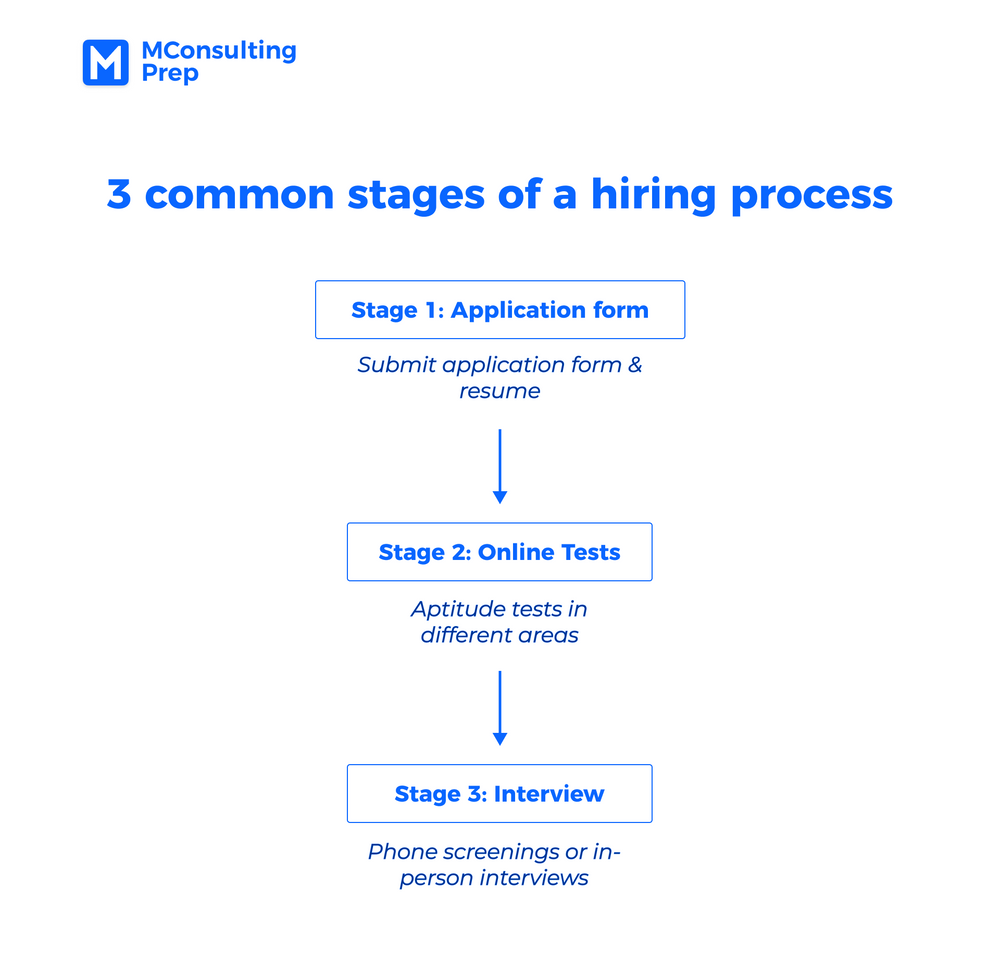
Stage 1: Application Form
In this stage, you need to access and sign up on the hiring company’s website, upload your documents and submit an online application. The company can gain an overview of your background, personality, and motivation through your application form and how these are compatible with the organization’s culture and values.
Stage 2: Online Tests
After completing the application form, you will be directed to online tests that measure candidates’ cognitive abilities and behavioral strengths. These exams are often tightly timed, comprising multiple-choice questions in different areas, such as numerical, verbal, and deductive reasoning. Some companies include situational judgment tests or occupational personality questionnaires to assess candidates’ behavior or problem-solving skills at the workplace.
Stage 3: Interview
The interview round can be administered in the form of phone screenings or in-person discussions. This stage often comes after online aptitude tests, in which you will give the company a better understanding of your personality, skills, and work experience. At the same time, it is also your chance to better understand your company by asking questions and further discussing.
Depending on a variety of skills and abilities, aptitude tests comprise different types of tests. Besides the common types like numerical, verbal, and deductive reasoning tests prevalent in most industries, there are other assessments customized to the needs of specific roles. The next part of this article will dive deep into each exam, so stay tuned!
Aptitude test - Numerical reasoning test
Numerical reasoning test is a widely-used assessment to measure candidates’ math skills and the ability to interpret numerical data. The tests are prevalent in most test publishers, including some notable names like SHL, Aon, or Saville. The time limit varies from 10 to 30 minutes, allocated for 3 main question types:
- Word problem
- Data interpretation
- Calculation
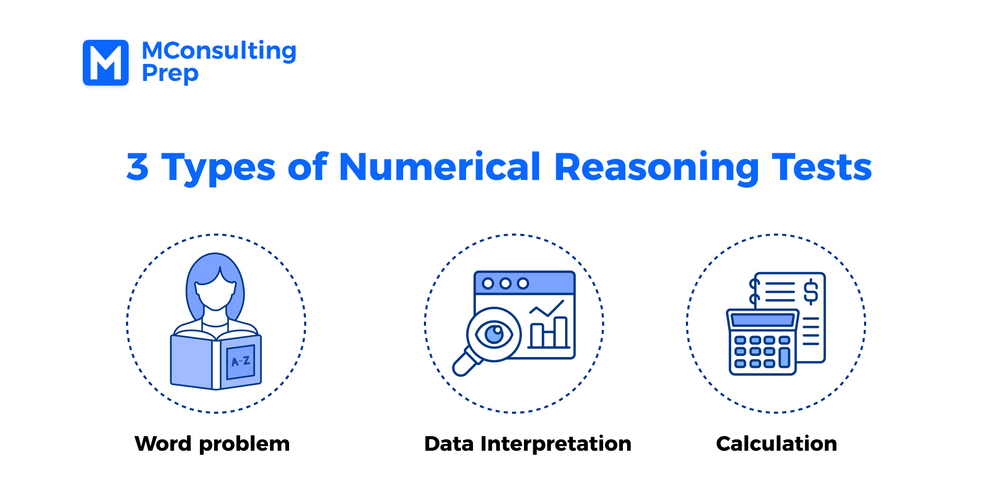
Word problem and Data Interpretation are the most common question types, as they account for 80% of Numerical Reasoning Tests. The next part will cover deeper insights and examples for each type, so keep moving!
Word problem
In this question type, you will encounter mathematical questions in written format, from which you have to extract the information and perform arithmetic calculations such as addition, subtraction, multiplication, or division. Here is an example from MConsultingPrep:
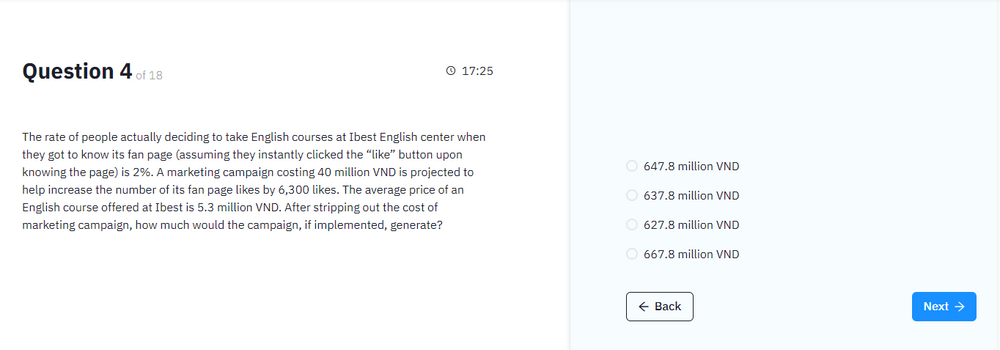
Source: MConsultingPrep
Answer: C
Explanation:
The number of people actually deciding to take English courses after liking the fan page is 6,300 × 2% = 126 people.
The revenue from these customers is 126 × 5.3 = 667.8 million VND.
The campaign would generate 667.8 - 40 = 627.8 million VND in profit.
So, the correct answer is C.
Data interpretation
Data interpretation questions ask you to understand and use graphical and tabular data to calculate a required value. This common question type measures your data analysis and decision-making ability, which is crucial for any business-related role as you regularly face numerical tables and charts.
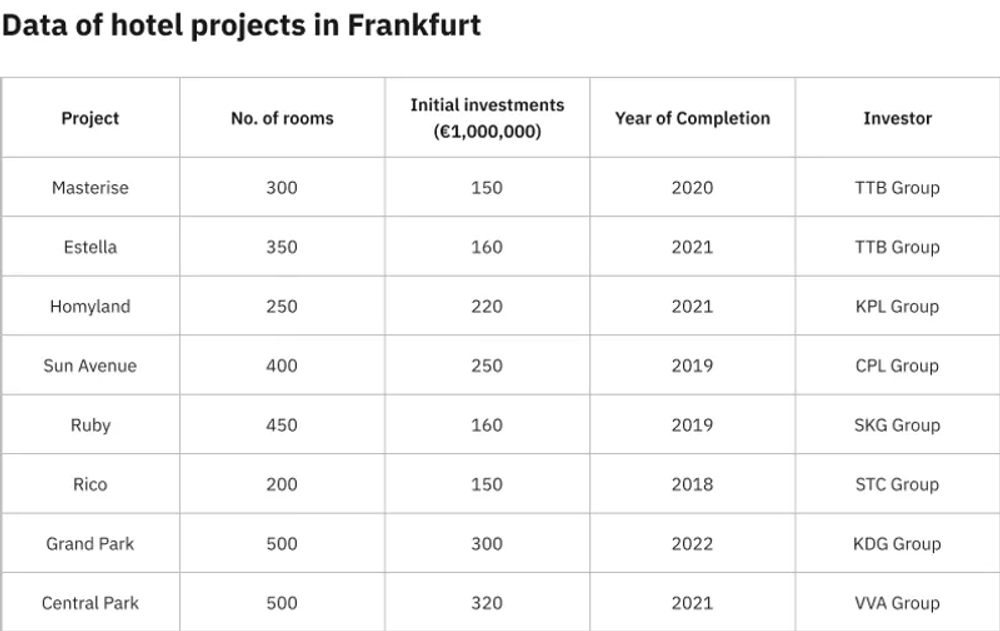
If the value of investment increases 10% per annum, what would be the future value of total investment for projects completed in 2019 as on the year 2021? Compound rate is not taken into account.
A. €496M
B. €82M
C. €492M
D. €410M
Source: MConsultingPrep
Answer: C
Explanation:
To calculate the future value of total investment for projects completed in 2019 as on the year 2021, you will need to first calculate the total value of investments in 2019, then the increase of value of investments in 2 years and finally add the two numbers together.
Total value of investments in 2019 = 250 + 160 = €410M
The increase of value of investments in two years (2019 to 2021) = 410 × 10% × 2 = €82M
Required value = 410 + 82 = €492M
Calculation
Calculation questions consist of basic arithmetic operations, such as addition, subtraction, multiplication, and division. Your job is to perform math calculations using mental math as quickly and accurately as possible, as this question type often does not permit a calculator. Here are some sample questions for you to practice:
QUESTION 1: 20 x 10 - 35 = ?
Answer: C
QUESTION 2: 80 : 5 + 250 = ?
Answer: D
Aptitude test - Verbal reasoning test
Verbal reasoning test is an aptitude test measuring your language comprehension and the ability to process written information. Along with numerical reasoning test, this assessment is developed by most test publishers. However, the format varies among providers, and the duration ranges from 15 to 20 minutes. There are 5 popular types of verbal reasoning tests, namely:
- Synonym/Antonym
- Analogy
- Word association
- Making inferences
- Reading comprehension
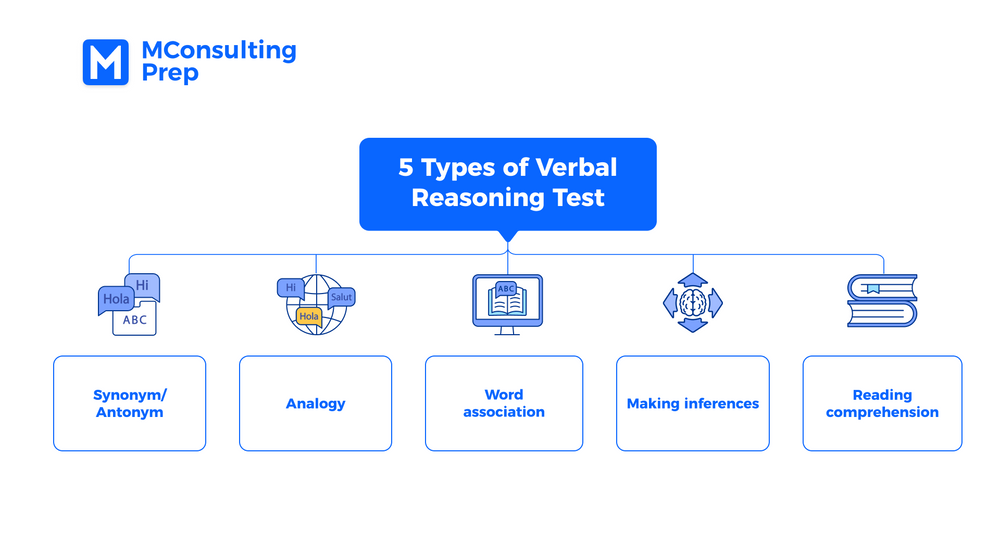
Each question type aims to assess one domain of your language comprehension and lexicon. Let’s explore their purpose, sample questions, and training materials in the next part of this blog!
Synonym/Antonym
In this question type, you are asked to determine the relationship between two given words, whether they are synonyms, antonyms, or neither. This question aims to measure your vocabulary level, one of the critical areas in Verbal Reasoning Tests. Let’s look at the example below:
Question:
Superb - Resplendent. These words......
A. Have similar meanings
B. Have opposite meanings
C. Are neither similar nor opposite
Answer: A
Explanation: Superb means impressively splendid. Resplendent also means
attractive and impressive. Therefore, these 2 words are synonyms.
When published by test providers, synonym/antonym questions are often under gamified assessments. Game-based questions record your time taken as a factor to measure your overall result.

Source: Test Partnership
Answer: Almost the same (Synonyms)
Explanation: Exit is the action of leaving. So these words are synonyms.
Analogy
Analogy questions often have two parts; one includes an example of a word pair. From that, you have to select the corresponding answer of a given word to make another pair with a similar relationship. This question type measures not only your lexicon but also the ability to find connections between words.

Source: MConsultingPrep
Answer: B
Explanation: In this example, we can see that DRUM is a type of INSTRUMENT. Therefore, the bridge is Item to Category, and we need to find a word that is the category that DRILL falls into. And out of all the options, we have TOOL.
Word association
This question type asks you to select one or two words that have a different meaning from the rest. Identifying the odd-one-out requires a good understanding of the semantic relationship between words. Test yourself with this example from MConsultingPrep:
pungent, resinous, fragrant, aluminum, chemical
Source: MConsultingPrep
Answer: aluminum
Explanation: “pungent”, “resinous”, “fragrant”, “chemicals” are all related to smells. So “aluminum” is the odd one out.
Making inferences
Making inferences is one of the most common types of verbal reasoning questions, in which you have to determine whether a given inference derives from the passage by selecting “true”, “false”, or “cannot say”. Besides verbal comprehension, you also need logical ability to reason the information from the text.

Source: MConsultingPrep
Answer: TRUE
Explanation:
It is stated in the second sentence that when played at a low intensity relative to background noise, all three types of sound reduced pain sensitivity in the mice. The adverb "Surprisingly" and "did not expect that" have the same meaning.
Reading comprehension
In Reading comprehension questions, you have to process information from a given passage and spot relevant details. Typically, you are asked to determine which statement is included/not included in the text or generate the passage's main idea. Below is a sample question from MConsultingPrep:

Source: MConsultingPrep
Answer: C
Explanation: The reasons are listed in the second and third sentences of the passage. However, there is no detail about tobacco smoke making people choke.
Aptitude test - Estimation test
In Estimation Tests, you will have to perform quick and accurate estimations without using a calculator. Craft and technical positions will be the ideal subjects of this test, as estimation skills are crucial. The tests are often tightly timed, or your completion time will be factored into your overall performance.
Let’s look at a gamified question from JobFlare to better understand this type of test:
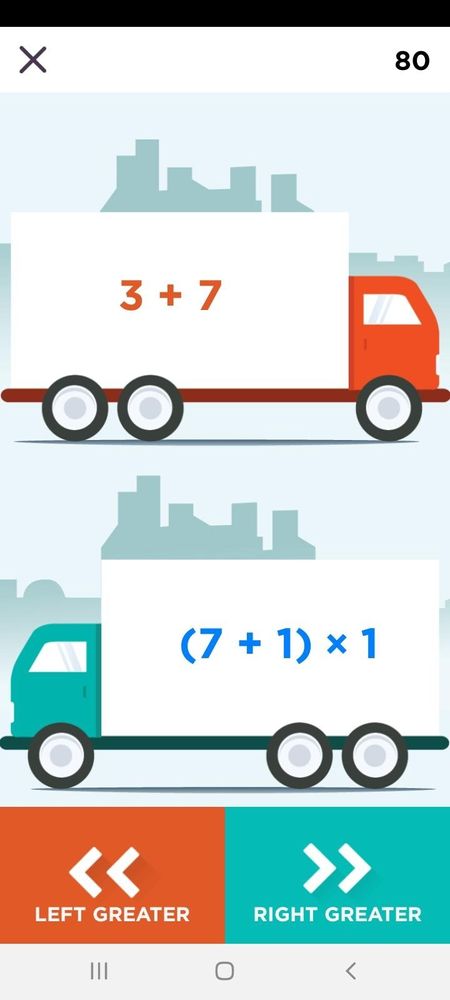
Source: JobFlare
Answer: Left Greater
Aptitude test - Deductive reasoning test
Deductive reasoning test is a logical thinking assessment requiring you to draw valid inferences from general clues and facts. The main aim of this assessment is to evaluate your ability to make logical deductions for problem-solving. The completion time ranges in various test providers, such as SHL, Aon, or Kenexa, typically around 20-30 minutes. There are 3 popular types of Deductive Reasoning Tests:
- Syllogism
- Ordering and arrangement
- Grouping
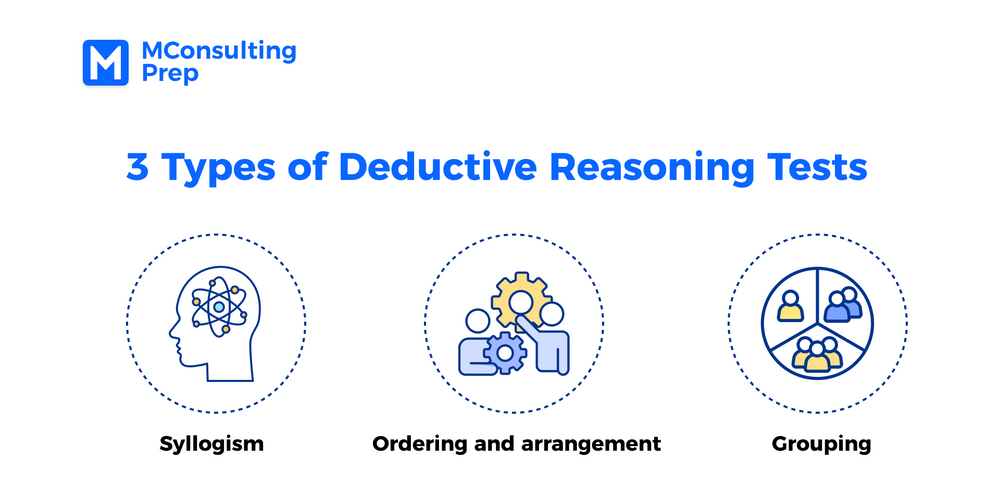
Keep scrolling to dive deeper into each question type!
Syllogism
In Syllogism questions, you are presented with general facts used to verify one or more conclusions. Specifically, your job is to determine which option follows the given statements. Let’s examine this question:

Source: MConsultingPrep
Answer: C
Explanation:
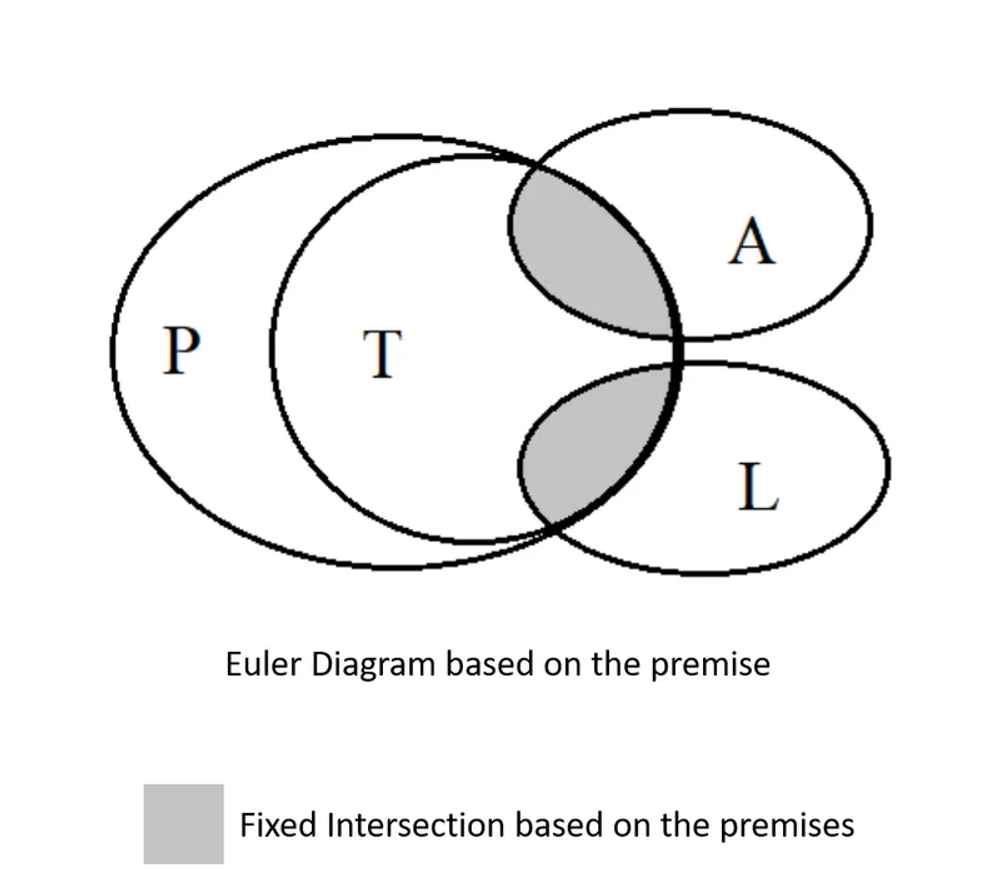
Denote
~T: Tablets
~A: Ample
~L: Laptops
~P: Phones
1. Analyzing the statements:
Some tablets are Ample. ⇒ T ∩ A
Some laptops are tablets. ⇒ L ∩ T
Every tablet is a phone. ⇒ If one is a Tablet, one must be a Phone ⇒ T ⊂ P
We draw the Euler diagram as in the figure (at the top of the page)
Note: We can only draw the diagram based on what is given from the premises.
2. Check the conclusions:
I. All phones are not laptops. ⇒ If one is a phone, one can not be a laptop ⇒ P ≠ L
Based on the diagram, we can see that (L ∩ T ⊂ P) ⇒ (L ∩ P)
⇒ Some phones can be laptops
⇒ Conclusion I does not follow.
II. Some phones are Ample. ⇒ If one is a Laptop, one must be an Ample⇒ P ∩ A
Based on the diagram, we can see that A intersects(A ∩ T ⊂ P) ⇒ P and A intersects (A ∩ P)
⇒ Some Phones, which is also Tablet, must be Ample.
⇒ Conclusion II follows.
Ordering and arrangement
In Ordering and arrangement questions, you have to arrange a group of items or people in the correct order by using given hypotheses. Let’s look at an example of this common question type:

Source: MConsultingPrep
Answer: B
Explanation:

From clue (1) and (2), we get two pairs of dishes:
[Biscuits-Curries]; [Frankie-Kababs]
From clue (3), we get the position of Pasta:
Pasta _ _ _ _
Kababs is neither to the immediate right nor to the immediate left of Pasta, then Kababs can be any position except for the first and second one.
From clue (4), we get the position of Frankie:
Pasta _ _ Frankie _
From clue (5) and (1), we get the positions of Biscuits and Curries:
Pasta Curries Biscuits Frankie _
The last empty position should be of Kababs.
The final seating arrangement will be as follows (at the top of the page)
Therefore, Biscuits is between Curries and Frankie.
Grouping
To solve the grouping questions, you need to divide the subjects into different categories based on one or a few sets of conditions. Let’s practice a sample question from MConsultingPrep:

Source: MConsultingPrep
Answer: B
Explanation:
If the hen stays in B, the bear cannot stay, and every other animal must stay in either A or C, depending on the position of the bee colony.
If the Hen stays in either A or C, and the bees stay in B, every animal must stay in A or C.
If the hen stays in either A or C and the bees
If the hen stays in either A or C and the bees don’t stay in B, every animal can stay in B, but the bear.
Therefore, in every case, the bear can only stay in either A or C, or not stay at all.
Aptitude test - Inductive reasoning test
Inductive Reasoning Test is a common aptitude test assessing your ability to recognize and interpret the patterns of abstract figures. The tests often last 15-20 minutes, including around 20-30 questions. Some notable test providers of Inductive Reasoning Tests are SHL, Aon, and Saville. Typical questions in Inductive Reasoning Test are:
- Figure series
- Odd one out
- Matrix

Let’s take a closer look at each question type together!
Figure series
In Figure Series, you will be asked to find the missing figure in a sequence by spotting the rule of the series. Let’s take a look at an example of this question type:
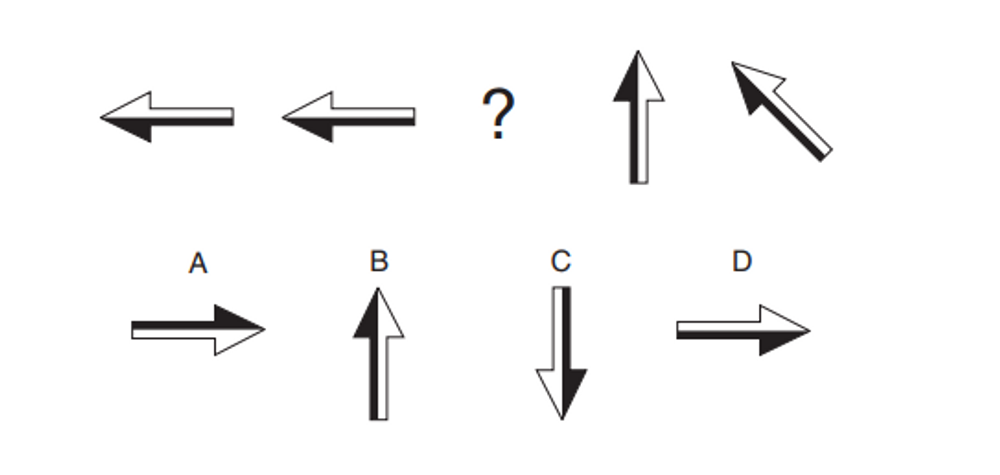
Source: “How to pass diagrammatic reasoning tests” by Mike Bryon
Answer: A
Example:
Rule 1: The arrow rotates counterclockwise in every step.
Rule 2: The degree of rotation is 360, 180, 90, 45 respectively.
Odd one out
Odd one out questions require you to identify the figure that doesn’t follow the common rule of a sequence. In other words, your job is to examine the group of elements and recognize the governing pattern between them.

Source: “The Ultimate IQ Test Book” by Philip Carter & Ken Russell
Answer: C
Explanation:
The black dot in figure C is connected to 2 white dots, while black dots in all the others are connected to 3 white dots.
Matrix
You will be given a grid of items, which requires you to find the missing part based on given patterns. Let’s try out a sample Matrix question to test your abstract reasoning skills:

Source: “The Ultimate IQ Test Book” by Philip Carter & Ken Russell
Answer: D
Explanation:
Divide the matrix into 4 squares. Opposite corner blocks of four squares are identical.
Aptitude test - Spatial reasoning test
Spatial reasoning tests measure candidates’ ability to understand and manipulate 2D or 3D objects by spotting patterns between those shapes. SHL, Kenexa, and Saville are common providers of this assessment, differing from each other in formats and time conditions. 2 types of questions in a spatial reasoning test include:
- Mental folding
- Mental rotation
Mental folding
Candidates are asked to unfold cubes to find their correct appearance on a transparent sheet. The folded paper must resemble exactly the sides and edges of the original 3D shape. Let’s examine the example below:
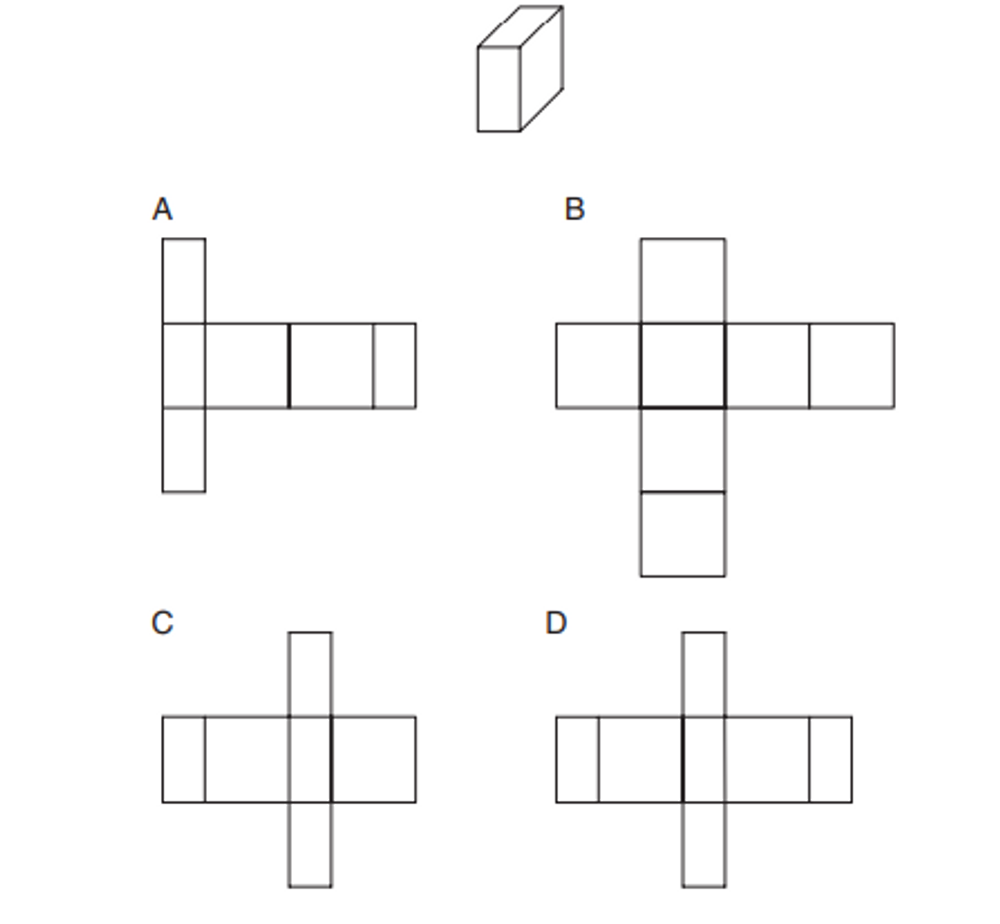
Source: “How to pass diagrammatic reasoning tests” by Mike Bryon
Answer: C
Mental rotation
Your job in mental rotation questions is to imagine how a 3D shape is viewed from another perspective and match the original object with the correct presentation of its new orientation. Here is an example of how this question type will be:
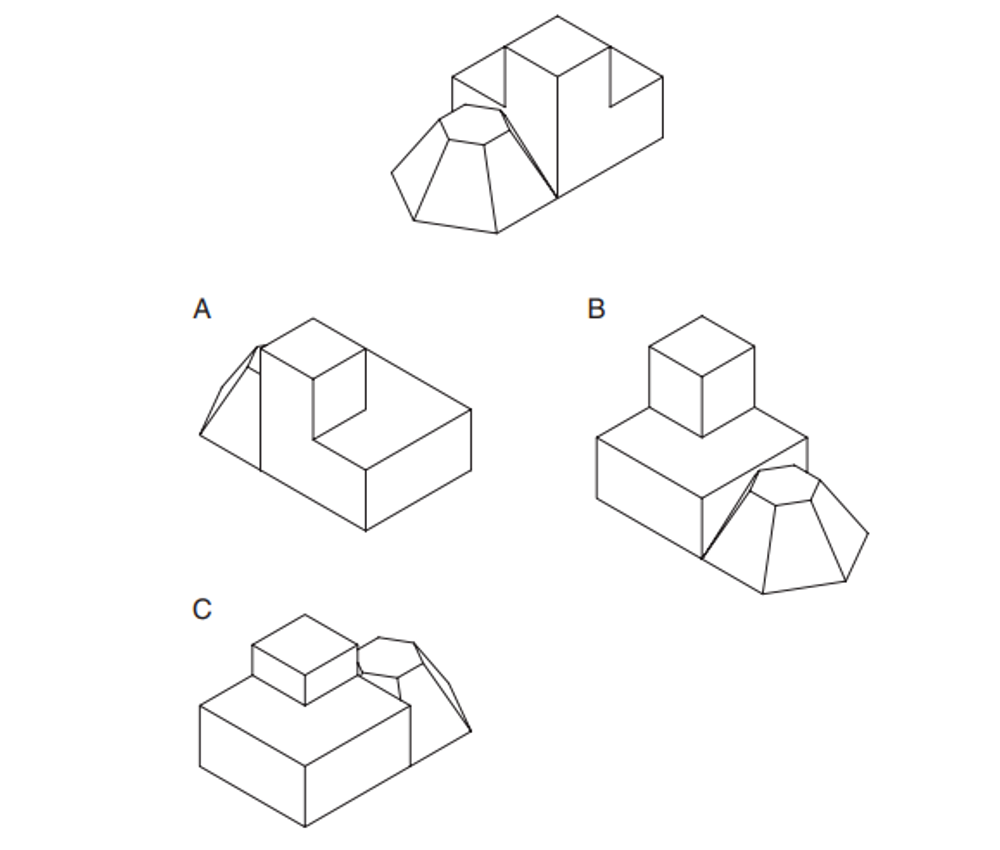
Source: “How to pass diagrammatic reasoning tests” by Mike Bryon
Answer: A
Aptitude test - Diagrammatic reasoning test
In the Diagrammatic Reasoning Test, you have to work with diagrams and flowcharts to find the rules governing given operations and apply them to deduce a logical output. The average time limit is about 20 minutes. This test type is not as common as those above; however, some test publishers are providing Diagrammatic Reasoning Tests, such as Aon or Saville.
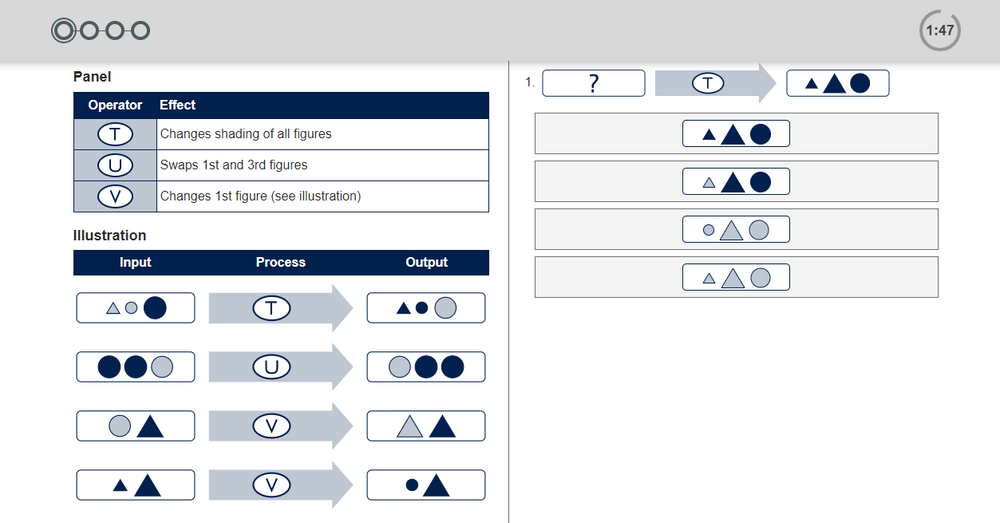
Source: Saville
Answer: D
Explanation:
The effect of “T” is changing the shading of all figures, so the color of the input has been altered but the sequence order remains the same.
Therefore, the input must be in light color.
Aptitude test - Mechanical reasoning test
Mechanical Reasoning Test assesses your ability to apply mechanical knowledge to solve problems. This test is commonly designed for technical jobs, such as engineering or IT positions. Topics often appear in mechanical reasoning tests, including:
- Forces
- Material property
- Fluid dynamics
- Temperature and heat transfer
- Pressure and sound energy
- Momentum and kinetic energy
Let’s look at an example of what to expect in this test:

Source: Saville
Answer: B
Explanation:
The end of the bar is attached to the handle. Therefore, they move in the same direction.
Aptitude test - Attention test
Attention tests determine whether a candidate can focus on textual details while processing information under time pressure. The tests are often used for roles that require detail-oriented skills, such as technical positions or accounting. 2 common types of questions can be found in an attention test are:
- Error checking
- Difference spotting
Error checking
This test asks you to match a given data to the correct option on the left side. This may sound easy, but samples on the list are often identical and confusing. Let’s look at an example from SHL below:
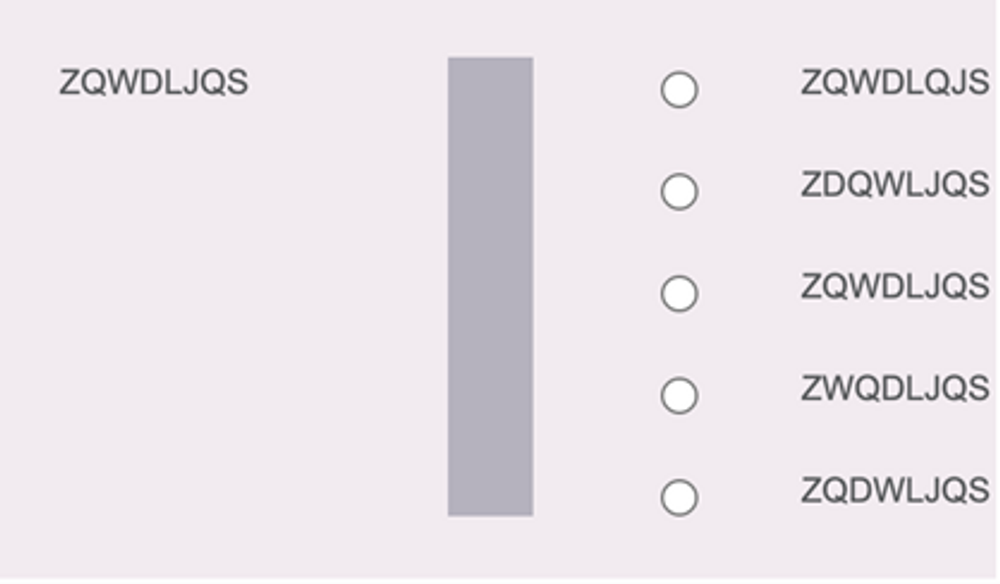
Source: SHL
Answer: C
Difference spotting
You must be familiar with the “Spot-the-Difference” game, where you must identify all the differences between 2 similar images. Difference spotting tests are designed with the same approach, requiring you to compare 2 near-identical photos and determine if they are different or the same. Here’s a sample question for you to try out:
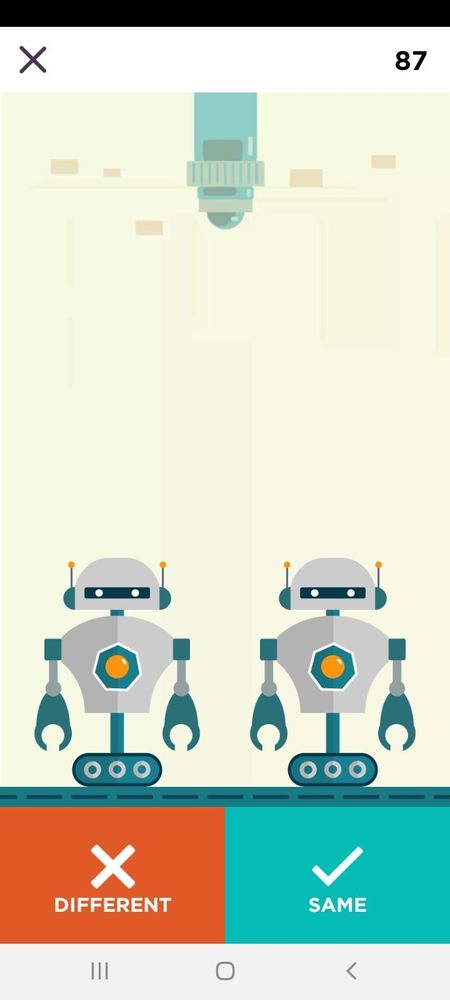
Source: JobFlare
Answer: Same
Aptitude test - Memory test
Memory tests assess the ability to memorize information in a certain period. This test type often comes in game-based tests, in which you have a few seconds to look at a picture or item, then recognize it afterward. Some tests are more taxing, like P&G's Grid challenge, which requires you to simultaneously solve symmetry and rotation problems while keeping track of a dot's location after briefly viewing it. Let's try out this interesting gamified assessment:
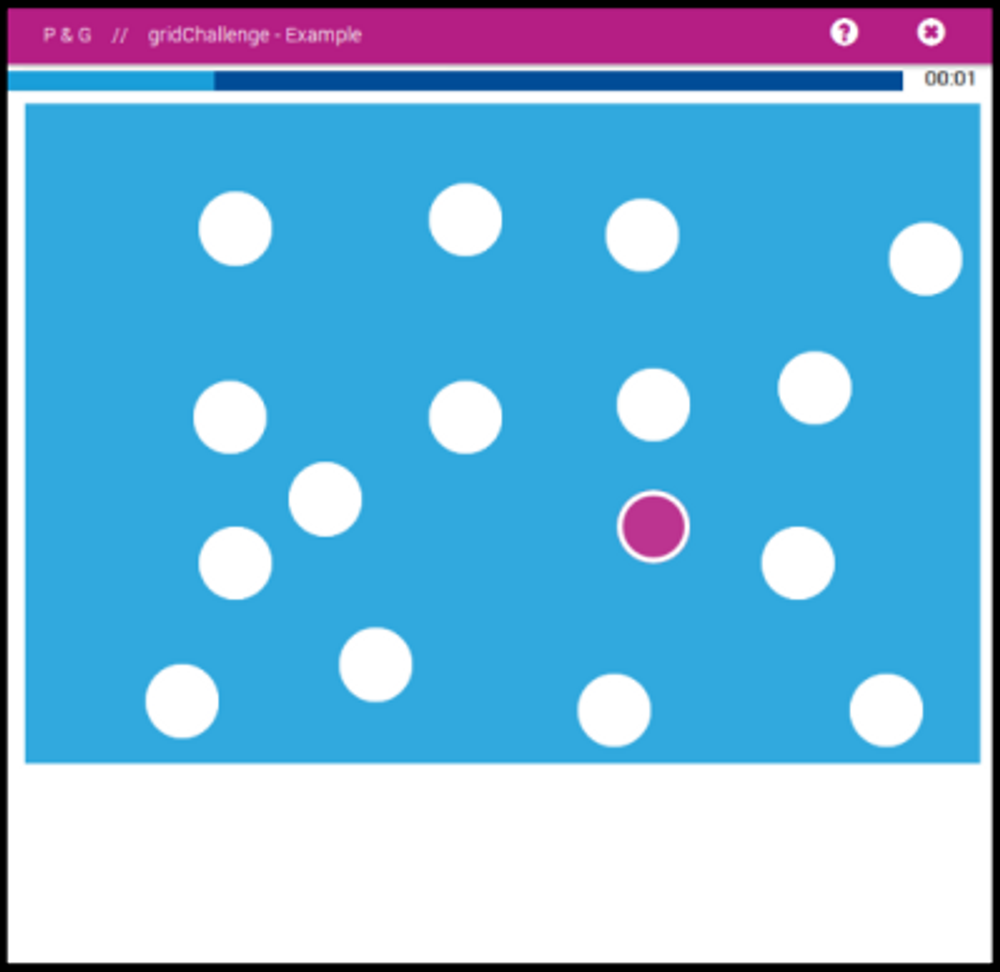
Source: P&G
The second task shows up, typically spatial awareness tests. Can you still remember where the highlighted dot locates after this symmetry question?

Source: P&G
Answer: No
Practice aptitude tests with MConsultingPrep
Aptitude Tests are a tough ask for most candidates as they measure cognitive abilities beyond any acquired industry knowledge. Also, online screening tests can be highly selective, with the average cut-off rate between 60-80%. However, hard work and regular practice can improve the required skills for the tests.
To help you survive the most-used assessments (Numerical Reasoning, Verbal Reasoning, and Deductive Reasoning Test), MConsultingPrep provides a wide range of simulation exams with thorough explanations and tried-and-true study guides. With our practical training materials, you can master the needed skills for aptitude tests from any test publisher!
Frequently asked questions
What is usually on an aptitude test?
Several sections are used by most positions, such as numerical reasoning, verbal reasoning, or logical reasoning tests. However, specific roles can require other tests customized for their needed criteria: spatial reasoning test, estimation test, or attention test.
What is the passing score for aptitude tests?
There is no fixed benchmark for aptitude tests as it depends on different companies. However, it is commonly acknowledged that you should achieve the 80th percentile, which means you outperform 80% of the candidates.
Note: A percentile rank compares individuals’ performance with other test takers of aptitude tests. Specifically, it is the percentage of candidates with lower performance that ranked score.
Can you fail aptitude tests?
Yes, it is normal to fail aptitude tests when candidates do not acquire the needed skills for the jobs. Moreover, recruitments are often competitive; only a small percentage of test takers are qualified. If not reaching the passing score, you can still reapply for the role; usually every six-month.
Is the aptitude test oral or written?
Aptitude tests are often conducted on the hiring company’s application website. Online aptitude tests, though remotely administered, are strictly proctored and tightly timed.
Why are aptitude tests so hard?
Aptitude tests focus on candidates’ natural strengths, which cannot be acquired from industry knowledge. Moreover, online tests are often under a strict time limit and cut off a huge number of candidates, making them highly selective and challenging.
How long after aptitude test is the interview?
It takes approximately 2 weeks to one month to receive an announcement about the next round. Typically, the company will contact you through email, which presents your result and details of the interview stage.
How can I clear my aptitude test in one day?
We all know that learning aptitude tests in one day is impossible, as they cover a wide range of test types, measuring various skills and abilities. Therefore, it is crucial to carefully prepare day by day to master the skills required. However, MConsultingPrep can help you learn aptitude tests as fast as possible with our practical guidelines.

/filters:quality(75)//case_thumb/public/1699589977462_aptitude_tests_package_4_x.png)